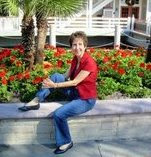The Jewish holiday Sukkot (pronounced Soo-kote), is also called “The Festival of Booths” or “The Festival of Ingathering.” The story is told in both the Jewish Torah and Christian Bible in Leviticus 23:33-42 and Deuteronomy 16:13-15.
The happy holiday of Sukkot comes in late September or early October, hot on the heels of the Jewish New Year and solemn Day of Atonement (Rosh Hashanah and Yom Kippur, see my previous article here). For 2010, this falls on September 23 and goes through Setember 30.
Sukkot celebrates the harvest season and also commemorates the 40 years in the desert when the Hebrews lived in temporary shelter (in the book of Exodus). King Solomon consecrated the first permanent Temple to the Lord during a Sukkot celebration.
The ancient Hebrews were to commemorate the harvest occasion by building booths made out of tree branches and palm fronds, living in them for seven days and holding grand celebrations. This can be found in Nehemiah 8:14-17:
They found written in the Law, which the LORD had commanded through Moses, that the Israelites were to live in booths during the feast of the seventh month, and that they should proclaim this word and spread it throughout their towns and in Jerusalem: ‘Go out into the hill country and bring back branches from olive and wild olive trees, and from myrtles, palms and shade trees, to make booths’ - as it is written.
So the people went out and brought back branches and built themselves booths on their own roofs, in their courtyards, in the courts of the house of God and in the square by the Water Gate and the one by the Gate of Ephraim. The whole company that had returned from exile built booths and lived in them. From the days of Joshua son of Nun until that day, the Israelites had not celebrated it like this. And their joy was very great. (see also Leviticus 23:41-43 and Ezra 3:4)
Today, the booth, called a sukkah (“sook-ah”) is usually erected by a synagogue’s congregation or workmen and still made with as authentic materials as possible. The celebration can be just on the first day or take place on each of the seven days. Kids loving camping out in the booths. Families and guests will be served grape wine or grape juice to signify the fruit harvests, and something like a delicious, thick sponge cake to symbolize the grain harvests. Mmmm, delicious!
Because this is such a joyous celebration, you may find a Jewish synagogue or Messianic congregation in your area that opens their celebration up to the public so that whole neighborhoods can learn of this tradition. Take the opportunity to go!
This is a copyrighted excerpt from Sheryl’s book, What Every Christian Should Know about the Jewish People: Improving the Church’s Relationship with God’s Original Chosen Nation (c. 2008, Wine Press/Pleasant Word Publishing). All rights reserved. The book is no longer available, but please enjoy the other informative posts on this blogsite.
Subscribe to:
Post Comments (Atom)


1 comment:
Sheryl,
What a lovely idea, to celebrate in thankfulness, all of life that is good. I think it fits well with my idea, to do BlessBacks as a way to say thanks to people who have influenced us.
Thanks for educating the Gentiles :-)
Post a Comment